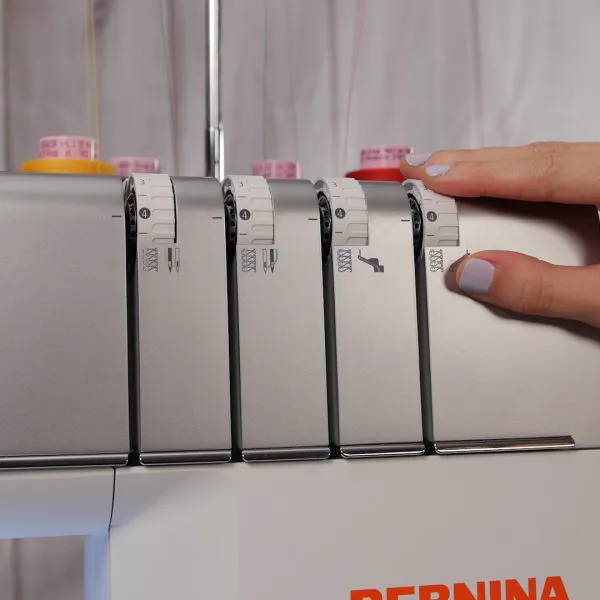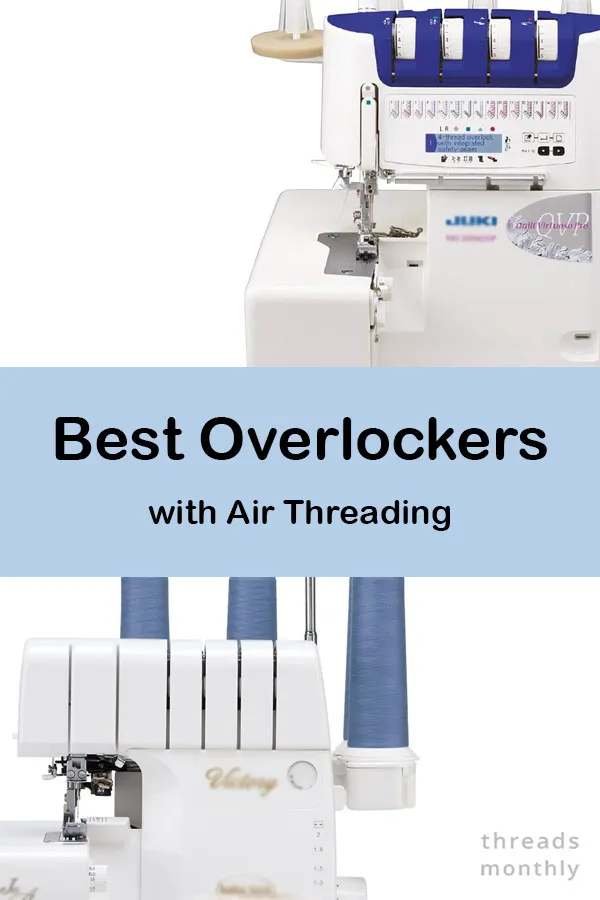Overlocker Air Threaders: Make Threading a Breeze
Overlocker Air Threaders: The Ultimate Guide to Easy Threading
Overlocker Air Threaders: The Ultimate Guide to Easy Threading
Security
However, we will endeavour to take all reasonable steps to protect the personal information you may transmit to us or from our online products and services. Once we do receive your transmission, we will also make our best efforts to ensure its security on our systems.
In addition, our employees and the contractors who provide services related to our information systems are obliged to respect the confidentiality of any personal information held by us. However, we will not be held responsible for events arising from unauthorised access to your personal information.
In-depth review: Juki MO-2000 QVP
Ideal for: people who want an easy overlocker that threads itself.
It’s self-threading!
An overlocker has 4 areas to thread: 2 needles and 2 loopers. The loopers are the trickiest part. In a manual machine, there’s a lot of “thread gymnastics” and tweezer action required.
With the Juki, you insert your threads into the looper holes and press a button. The machine uses air to do the rest. For the needles, use the built-in needle threader to shoot threads through the needle holes.
It’s impressively fast! You can start sewing quicker, and with less frustration.
You also won’t have to deal with a common issue seen in manual machines: the looper threads catching each other and breaking. It’s so frustrating having your threads snap in the middle of a seam. With air threaded models, each looper thread is protected in its own tube and can’t get tangled.
You also don’t have to follow a specific threading order.
I picked the Juki MO-2000 QVP as my favourite because of the unique “information screen”. You choose the stitch you want to do (eg. rolled hem), and it displays the settings you need.
This is such a time saver. You won’t need to find your manual to look up the correct settings. You won’t need to memorise or google them.
Most overlockers don’t have this, but I wish they did!
Excellent reputation for build quality
An overlocker seller I spoke to praised Juki’s quality. He said the brand has a long history of making industrial machines.
What stitches it can make
It can sew 2, 3 and 4 thread stitches. This includes the overlock, rolled hem, narrow hem, and mock flatlock stitches (photos here).
It stitches fast at 1500 stitches per minute. This is the top-end of speed for domestic overlockers.
Good for thick, lofty fabrics
The presser foot lift is very high at 5-8mm. Normally overlockers are 4.5mm-5.5mm.
This extra height means you can fit loftier fabrics under your presser foot.
It’s relatively quiet (ish)
Juki has made efforts to reduce the noise and vibration this overlocker creates. They boast it has ”quiet operation” in their sales page.
Accessories
It comes with a waste bin included, which is very handy. Overlocking is messy!
How Air Threading Machines Differ (What to Consider When Purchasing)
As I was comparing and contrasting machines, I noticed many brands make strikingly similar machines with air threading setups. However, some features that differ between machines and manufacturers are below.
- Some machines feature automatic tension to make stitch quality better without input. Some even have automatic differential feed, stitch length, and stitch width values.
- Needle threader apparatuses for the left and right needles are absent on several models. The easiest serger to thread for me is one with built-in needle threaders.
- Cleaning the inner belly of the machine is easier on some brands than on others.
- Knee lifters are becoming more popular on sergers.
- Most (but not all) air-threading sergers lack a free arm to make tubular sewing easier.
- Built-in one-step converter switches to take the tedious conversion to rolled hems out of your hands.
- Automatic thread cutting is a new development worth a second look.
- Warranties are different between manufacturers. For brands on their first version of air-threading overlockers, make sure it’s a generous warranty!
One-Path Threading
To begin threading, raise the retractable thread stand to the highest position. Raise the presser foot—this will open the tension disks in the machine making it easy to thread and re-thread. The machine follows a color-coded thread path and every stitch on this machine has one-path threading. This means you will not need to move spools of thread or change order to achieve different stitches. One-path threading has been featured on previous BERNINA Overlockers as well.
Use the spool stabilizers for large cones of serger thread. If using standard smaller spools of thread, place a cap on top to help keep the spool in place. Like a sewing machine, overlockers are all about smooth thread delivery but with more thread and higher speeds.



Tegs:
Search
Recent Posts
-
Mastering the Overlocker: Easy Needle Threading Techniques
Jul 16 2025
-
Master Janome Overlocker Threading: A Beginner's Guide
Apr 15 2025
-
Janome AirThread 2000D Review: A Powerful & Versatile Overlocker for Your Sewing Needs
Apr 17 2025
-
Find the Perfect Overlocker Thread Spools: A Guide to Choosing the Right Type
Apr 18 2025
Subscribe to Updates
Get the latest posts and fashion insights directly in your inbox.